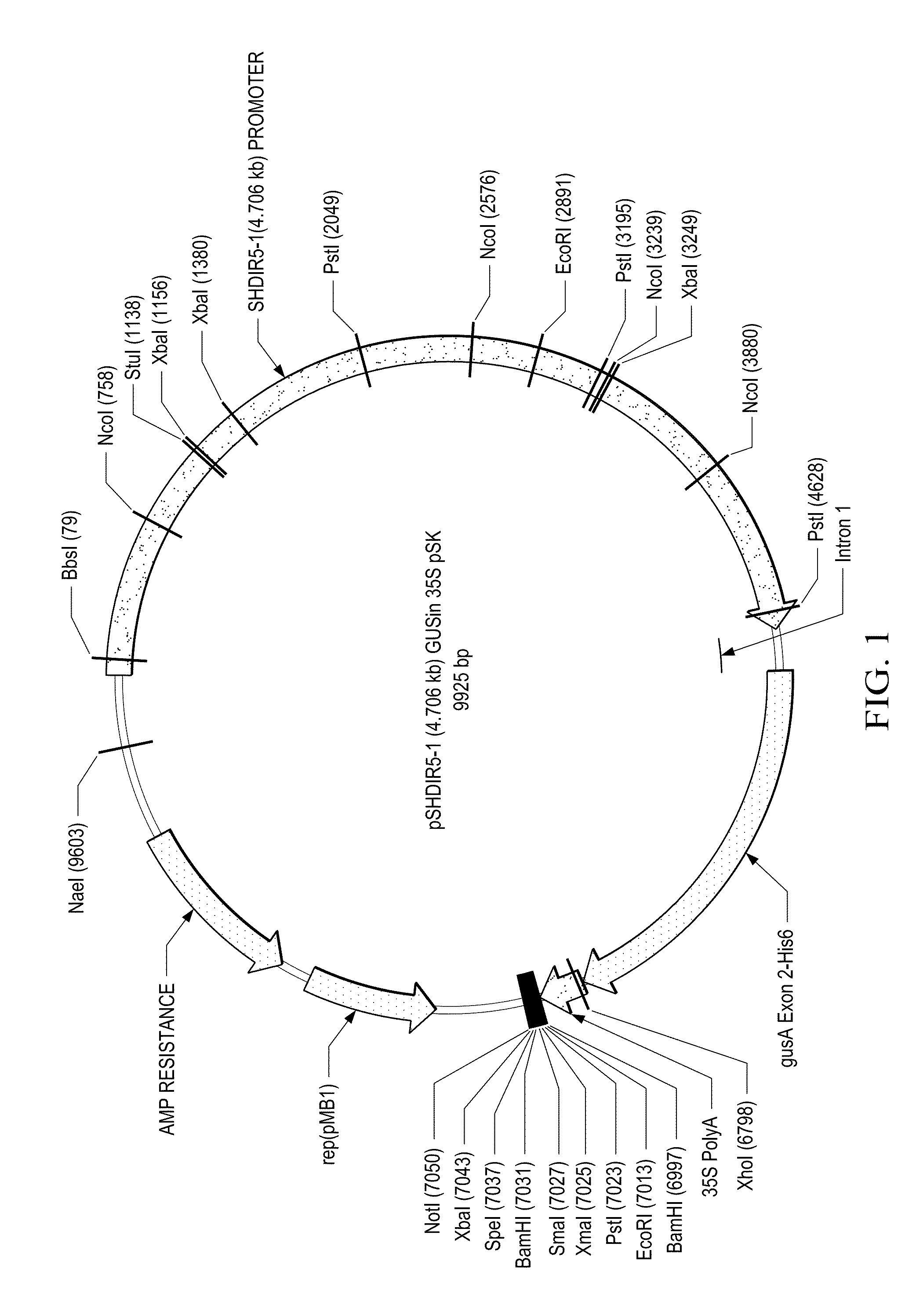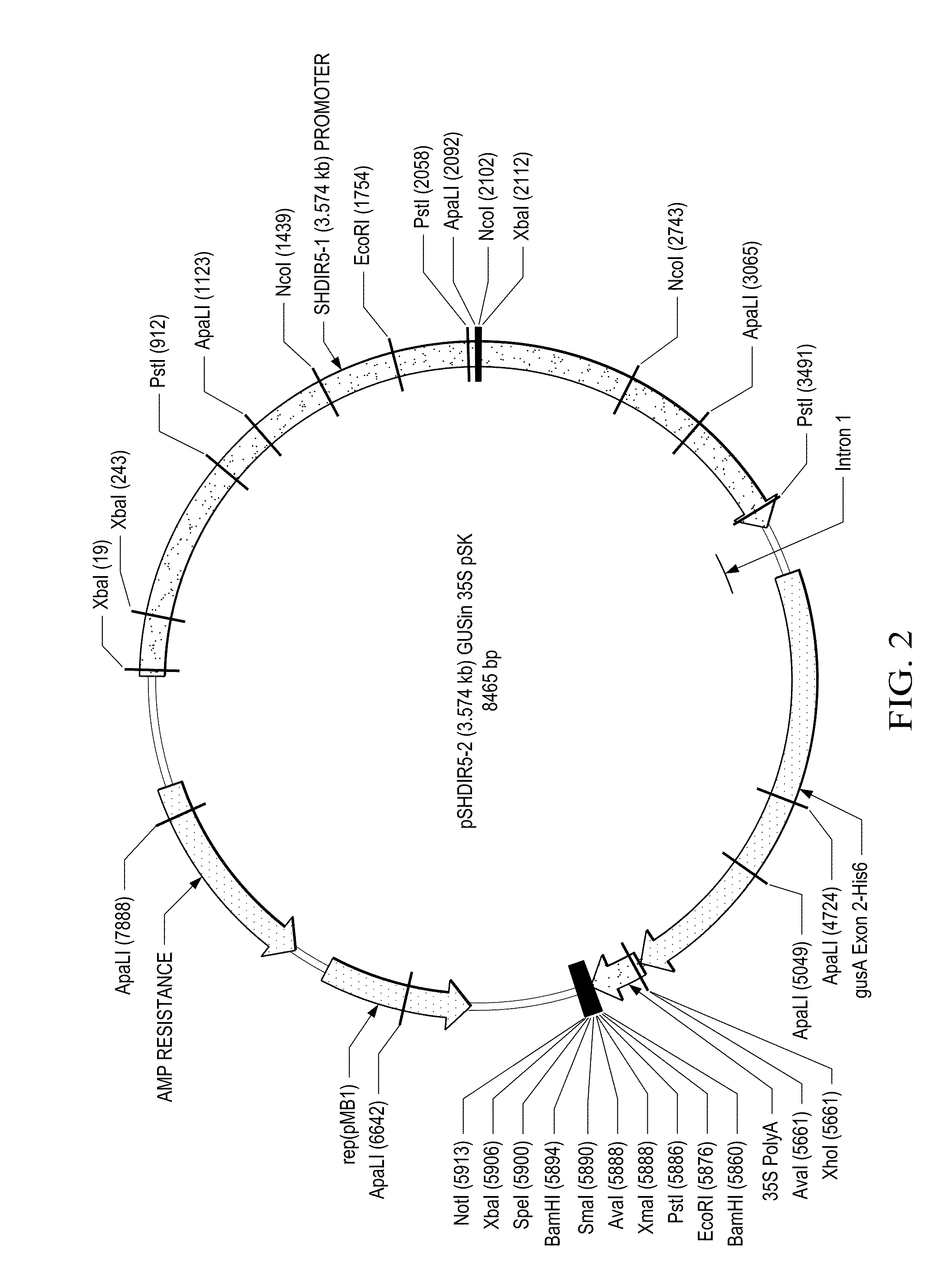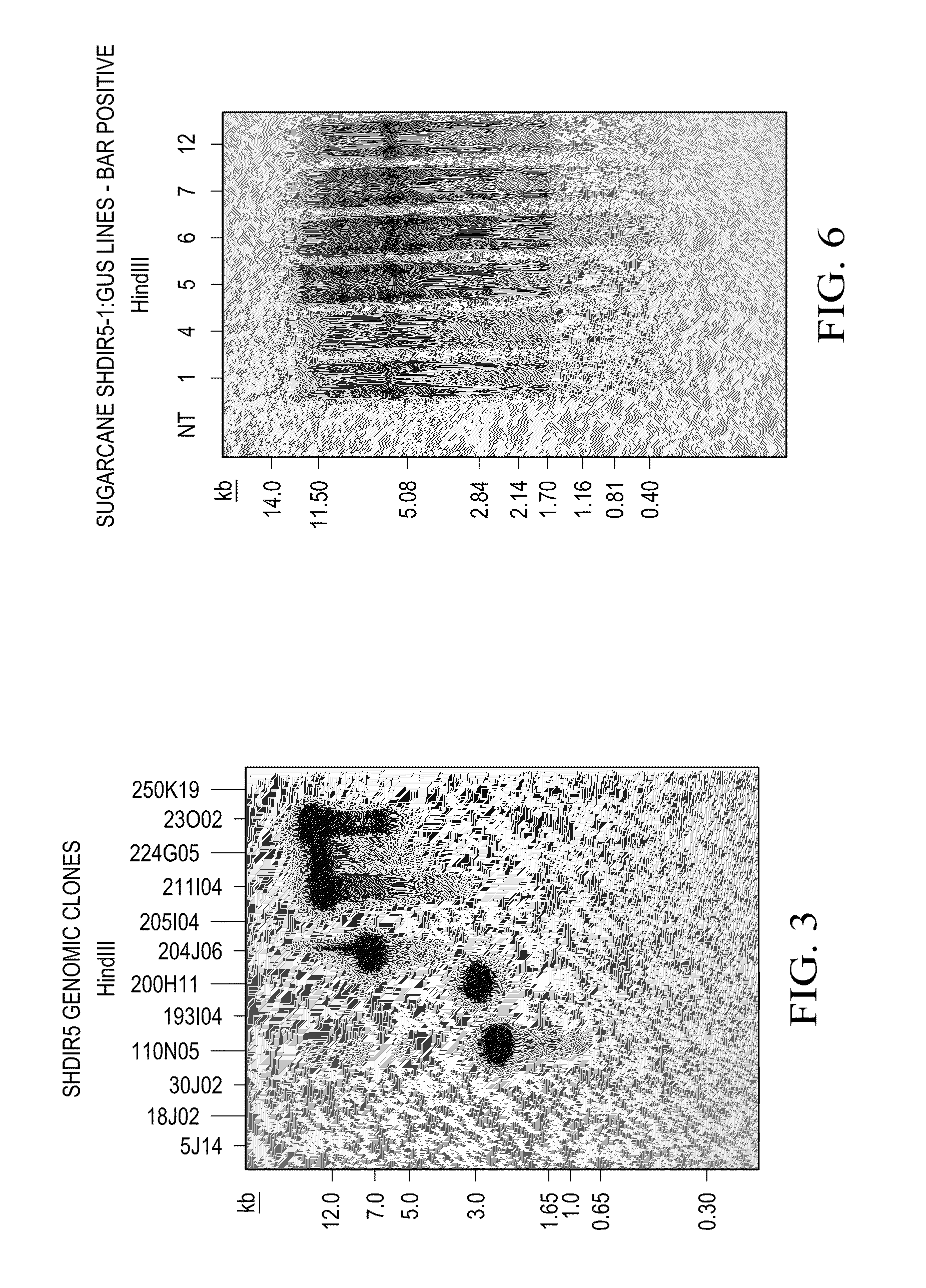Compositions, organisms, systems, and methods for expressing a gene product in plants
a technology of plant genes and products, applied in the field of plant gene products, can solve the problem of limited number of expression control sequences
- Summary
- Abstract
- Description
- Claims
- Application Information
AI Technical Summary
Benefits of technology
Problems solved by technology
Method used
Image
Examples
example 1
Determination of the Amino Acid Sequence of the SHDIR5-1 Protein
[0106]The protein encoded by the sugarcane (Saccharum spp. hybrid) dirigent 5-1 gene, SHDIR5-1, has been isolated from the sugarcane stem due to its abundance, and its amino acid sequence has been determined.
[0107]For extraction of total soluble proteins (TSPs), liquid nitrogen-frozen pre-shredded stem tissues of sugarcane (variety CP72-1210) (100 g) were homogenized with a Warring laboratory blender on ice in cold extraction buffer (50 mM 2-(N-morpholino) ethanesulfonic acid MES), 150 mM sodium chloride, 10 mM ethylenediamine tetracetic acid (EDTA), pH 6.0) (300 mL) (Woodard et al., 2009) at half maximal speed for 10 min. The protein supernatant was collected by spinning down the stem homogenate at 12,000×g for 30 min at 4° C., following filtration through three layers of cheesecloth (VWR International, LLC, Radnor, Pa.). The protein supernatant was clarified from the native proteins by pH adjustment to 4.5 (with 5 N a...
example 2
Comparative Sequence of the SHDIR5-1 Protein Relative to Other SHDIR Proteins
[0108]The determined amino acid (aa) sequence of the SHDIR5-1 protein (SEQ ID No.: 4) was compared with that of the previously identified SHDIR proteins (Table 2).
TABLE 2Comparison of SHDIR5-1 and SHDIR protein sequencesSHDIR5-1 (172 aa)1 to 172 aaQ117 Dirigent (187 aa)-AAR00251*1 to 172 aa99%Dirigent-like (187 aa)-AAV50047*1 to 172 aa98%Putative dirigent (187 aa)-CAF25234*1 to 172 aa96%SHDIR16 (187 aa)-ACY41219*1 to 172 aa97%Putative dirigent (187 aa)-AFD64564*1 to 172 aa95%*NCBI GeneBank accession numberSequence identity (%): The sequence identity (%) was obtained by BLASTp search with the SHDIR5-1 protein in the NCBI GeneBank
example 3
Isolation of the SHDIR5-1 Genomic Clone and Promoter
[0109]The promoter of the SHDIR5-1 gene has been isolated by screening a sugarcane genomic library. The nucleic acid sequence of the SHDIR5-1 promoter has also been determined.
[0110]The SHDIR5-1 genomic clone was isolated from a sugarcane genomic library, constructed in a bacterial artificial chromosome (BAC) (Clemson University Genomics Institute (CUGI, Clemson, S.C.). The six filters of the sugarcane BAC genomic library SHCRBa, prepared by CUGI, were screened with the SHDIR5 full-length cDNA (isolated from a sugarcane stem-expressed cDNA library: Damaj et al., 2010) probe using CUGI hybridization services (http: / / www.genome.clemson.edu / services / genomics / hybridization). Screening of the sugarcane BAC genomic library with the SHDIR5 cDNA probe revealed the presence of several hybridization signals, indicating that the SHDIR5 gene is present in multiple copies in the sugarcane genome. Twelve SHDIR5 genomic clones exhibiting strong h...
PUM
 Login to View More
Login to View More Abstract
Description
Claims
Application Information
 Login to View More
Login to View More - R&D
- Intellectual Property
- Life Sciences
- Materials
- Tech Scout
- Unparalleled Data Quality
- Higher Quality Content
- 60% Fewer Hallucinations
Browse by: Latest US Patents, China's latest patents, Technical Efficacy Thesaurus, Application Domain, Technology Topic, Popular Technical Reports.
© 2025 PatSnap. All rights reserved.Legal|Privacy policy|Modern Slavery Act Transparency Statement|Sitemap|About US| Contact US: help@patsnap.com



